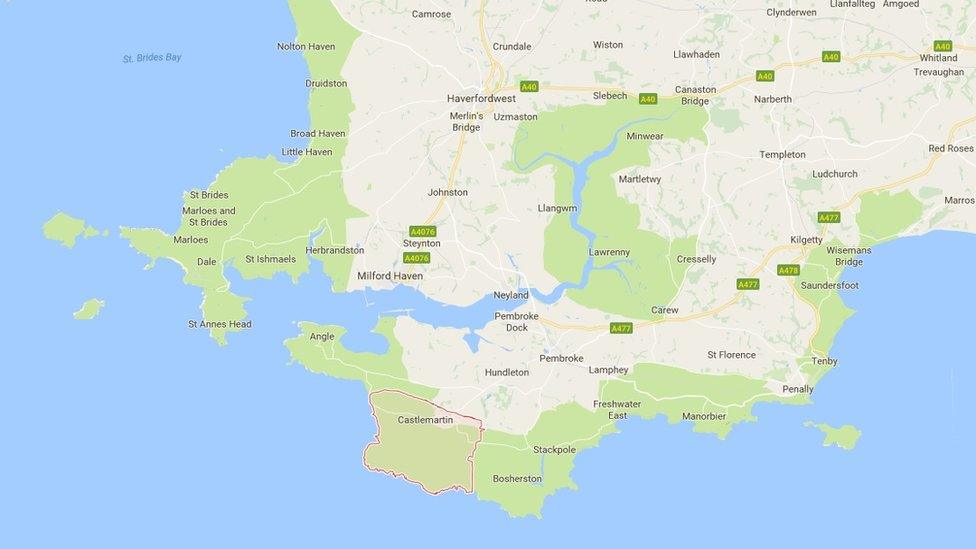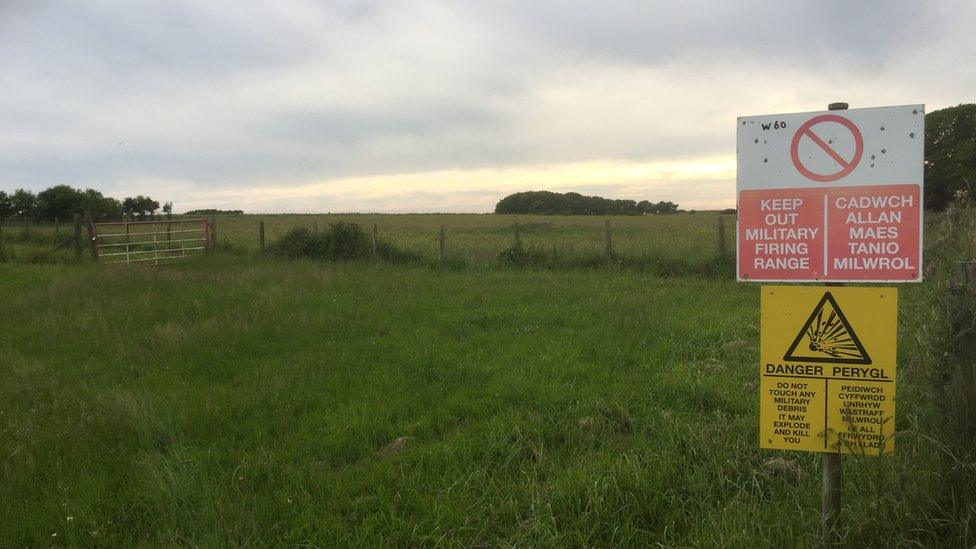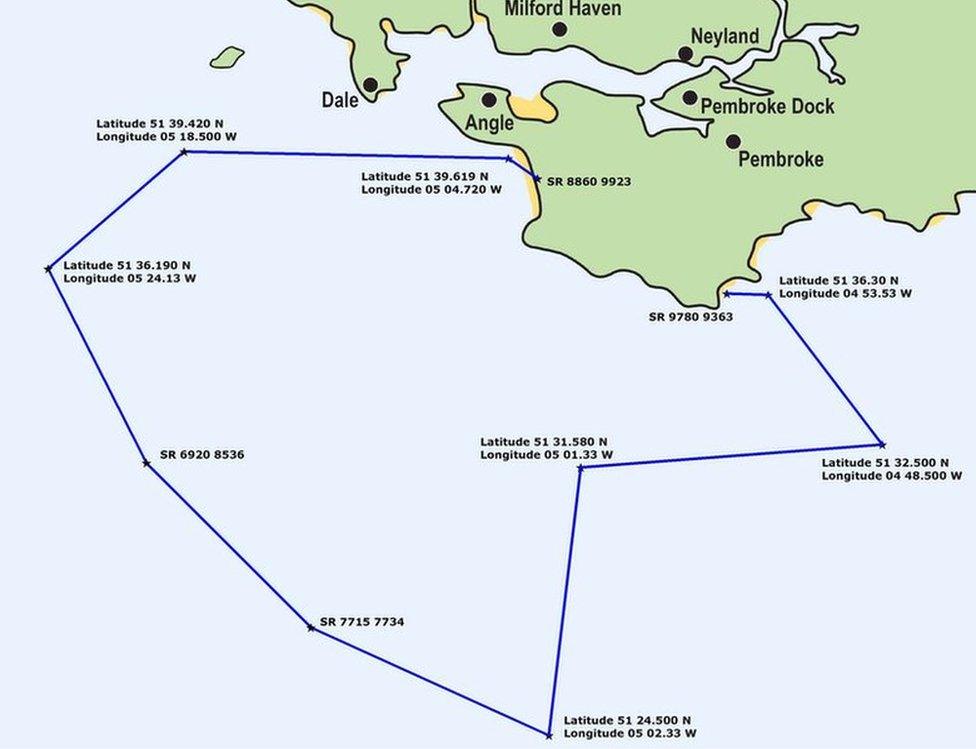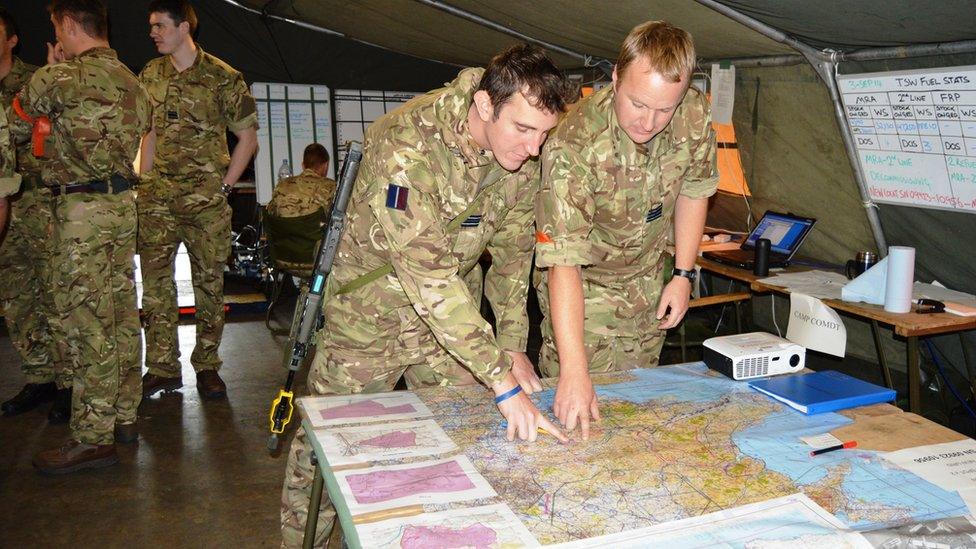Castlemartin Range: How the Army use the training site
- Published

Castlemartin is located within the Pembrokeshire Coast National Park
Castlemartin Range is owned by the Ministry of Defence and is one of 12 British Army training estates in the UK.
Located about six miles from the town of Pembroke, it covers about 6,000 acres (2,400 hectares) of land on the south Pembrokeshire coast.
The range was opened in 1938 after the War Office requisitioned land from the Cawdor Estate, and was used until 1945 for tank training.
After the Second World War, farmers used the land, before it was taken on by the military in 1951 when the Korean War started.
Between 1961 and 1996 it was used by German tank units as part of an agreement which saw the British Army use the Bergen-Hohne Training Area in Germany.
The German forces had a shortage of suitable tank training areas while the British Army needed more room for their exercises.

The base at Castlemartin Ranges
Castlemartin Range is now one of two armoured fighting vehicle training areas in the UK where direct live firing exercises and vehicles manoeuvres take place.
The other is at Lulworth Cove in Dorset.
It is used by the Army, Army reserves and cadets, and occasionally the Royal Air Force and Royal Marines.
Apart from a short break over Christmas, it is in use all-year round, for 44 weeks in total from January to mid-December.
Firing exercises take place at day and night, and each month the MoD releases a firing warning notice., external
In June, firing was scheduled to take place between 09:00 BST and 16:30 and 18:30 and 23:30.
Writing in his "behind the scenes at Castlemartin Training Area", external blog on the MoD website last August, deputy training safety officer, Steven Philipps-Harries said: "Last year 153,566 man training days took place here and that training involved the firing of more than three million rounds of ammunition."


A map of the coastal danger area
Part of the Pembrokeshire coast path passes through the eastern side of the range and is closed to the public on firing days.
When the range is active, red flags and red lights at nights are used, and the road from Bosherston and St Govan's Chapel and the footpath from St Govan's Head to Broadhaven is closed.
The coastal danger area can extend anything between three nautical miles (5.6km) and 12 nautical miles (22km) between Little Furznip and St Govan's Head off the Pembrokeshire coast, depending on what weapons and ammunition are being used.
People who want to take a boat into the coastal exclusion zone during firing exercises have to call range control or radio the range safety craft to be given a safe route.
All other areas of the range are out of bounds to the public, and during non-firing times the range danger area is patrolled by serving military staff.
Troops training there are also briefed to challenge any civilians they see on the range.

An RAF training exercise at Castlemartin in 2014